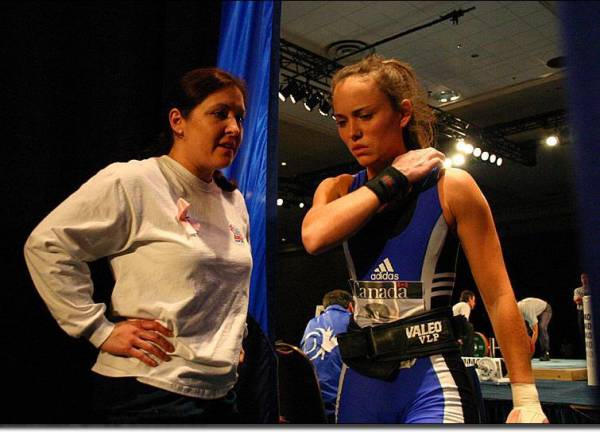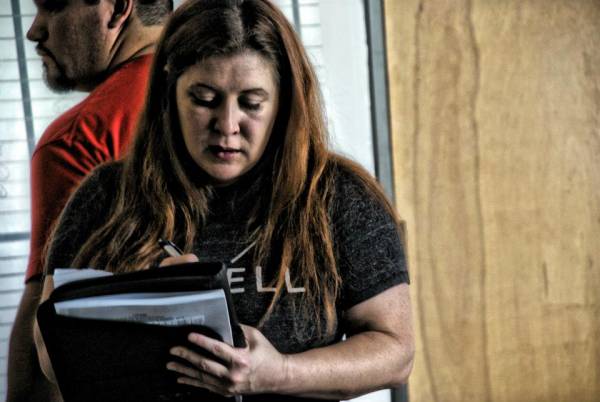Most coaches have devised their own method for teaching the snatch and clean to their athletes and thusly, so have I. Many older-generation coaches have utilized a bottom-up approach, but in more recent decades the top-down approach has prevailed.
Most coaches have devised their own method for teaching the snatch and clean to their athletes and thusly, so have I. Many older-generation coaches have utilized a bottom-up approach, but in more recent decades the top-down approach has prevailed.
It is, for example, the method used by both USA Weightlifting and the CrossFit Olympic Lifting Trainer Course. By most accounts, it is effective and prepares the athlete for reception of a bar overhead.
I do, however, believe there is still merit to using the bottom-up approach and have therefore incorporated it into teaching beginners, as well as heavily relying on it to fine tune veteran athletes. I prefer to call my method of teaching the “Pause Method.” (Yes, I have foregone naming it after myself. Call me a fool.)
Before I begin, I would like to explain my basic conceptual understanding of the snatch and clean. The snatch and clean can be dissected into three basic movements:
From the floor to the hip, the athlete is simply standing the bar to the hip, positioning himself for the explosion.
This standing phase requires acceleration of the bar and is initiated by a drive through the floor with the legs to bring the bar to below the knees.
The transition from below the knee follows, with the knees extending slightly as the athlete continues pressing against the floor so the bar can pass without clipping the knees.
The result should be that the athlete is in the hang position above the knee. This stand is followed by an extension of the hip using the posterior chain and ends with the bar in the hip crease. These are often referred to as the first and second pulls.
The “explosion” occurs when the bar reaches the hip and is a pressing of the legs through the ground violently to acquire the requisite force to propel the bar so the athlete can get under it.
This is often described as the jump. To properly execute the jump, the knees are slightly bent when the bar approaches and contacts the hip. The athlete pushes against the ground, utilizing the extension of the hip, knee, and ankle, resulting in a full-body elevation that thrusts the barbell upward.
The explosion is followed by an action of the wrists and elbows functioning to maintain the proximity of the bar to the body and preparing for the reception of the bar in the final or bottom squat position.
The receiving position must coincide with the height of the bar in order to meet the bar in a coordinated fashion. When this happens, the bar will land on the lifter, timed so that the centers of mass and gravity combine and seamlessly continue moving downward in concert.
My goal is to teach all the requisite positions as well as how the athlete should move so that these positions are moved through on each lift. The Pause Method allows the coach to segment the lift so the athlete can develop his spatial orientation and find these same positions on his own quickly, as is required for lifting heavy weights.
I begin teaching with a light barbell adding weight conservatively. I would estimate the athlete is working with anywhere from 40% to 60% of maximum capacity when learning, but since we often do not have a max yet, I watch the speed and movement to determine whether an athlete should add any weight to the bar. I err on the side of too light.

Over the next four weeks, I will be sharing an example of a Pause Method program I have used for teaching the lifts.
The goal is to ingrain the proper positions, encourage the athlete to slow down in this initial learning phase, and teach the athlete how to time the receiving of the weight to avoid losing the bar in space.
In the receiving of the bar overhead or on the chest, the pause aids the athlete in meeting the bar, learning to turnover quickly, and allowing him to feel his balance before the squat portion of the lift. It also encourages a complete extension in the pull.
I have witnessed many athletes whose snatch is simply a power snatch with a cut pull-and-dive under the bar. I often have to correct this and I find the Pause Method is helpful in both teaching and re-teaching.
I additionally want to ensure that athletes find the contact of the bar at their hips with their knees slightly bent in the jump position so they can learn to transition with minimal deceleration into the jump.
The athlete should bring the bar towards themself and maintain pressure on the heel in the pull from the knee to the hip or upper thigh, as opposed to moving towards the bar. I can reinforce this by having the athlete pause repeatedly at the hip/power position in the snatch and upper thigh/power position of the clean.
This allows me to watch how the athlete places pressure on the foot and to keep him or her on the heels longer in the long term, avoiding the problem of the early jump that is often seen in experienced athletes.

In the first two weeks of this program the pauses will be abundant.
I will begin to remove them for athletes who are moving well. For others, I may choose to keep them until they can move through all positions correctly.
In the final week, I teach a complete pull with chest/torso/shoulder elevation. I have found athletes will also rush into the extension and teaching them first to pull to the point from which they jump and then adding the shoulder elevation helps them with timing in both the pull and the actual lifts. I allow them to speed up the pulls once they have learned to contact before elevating the torso.






